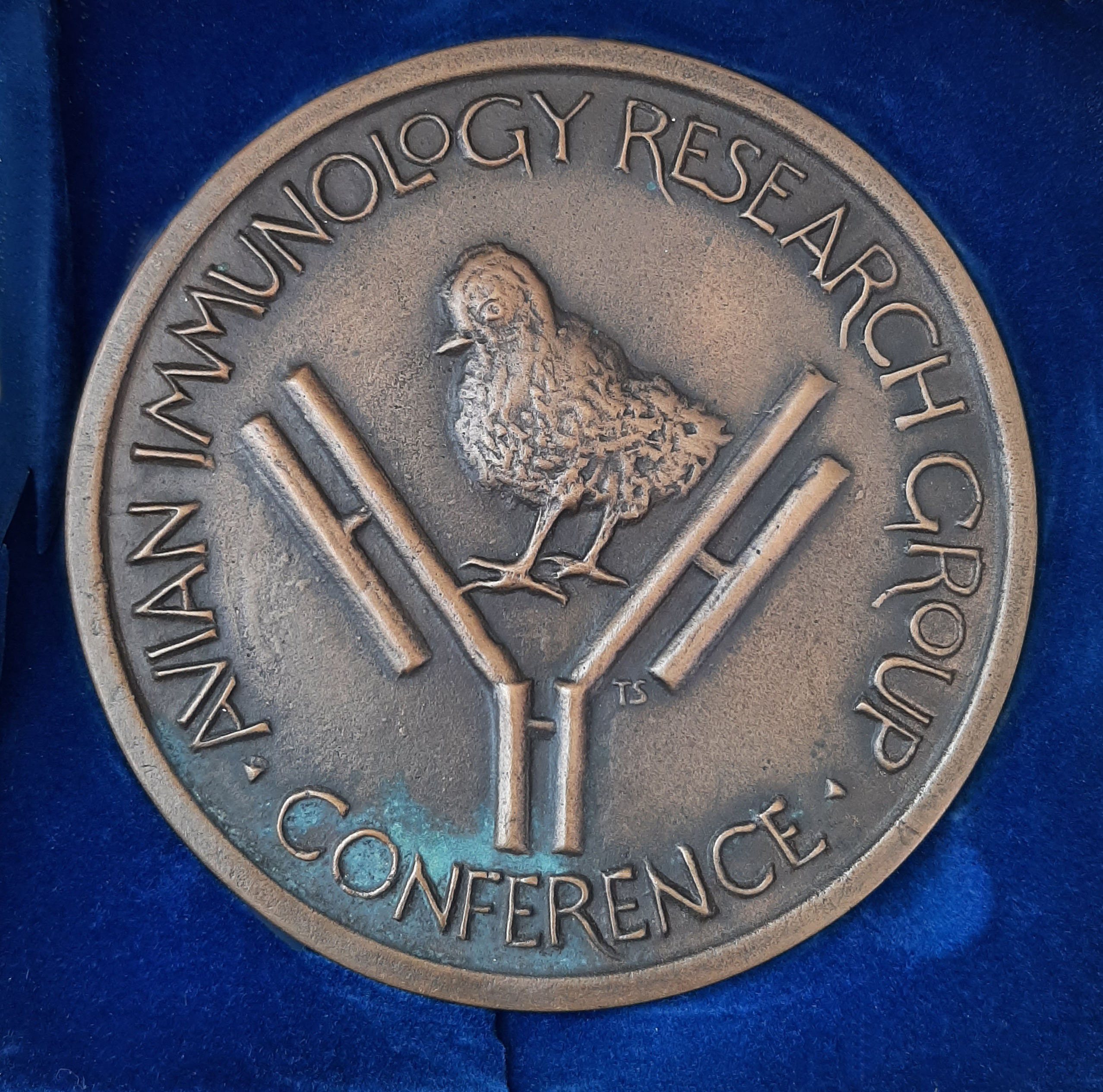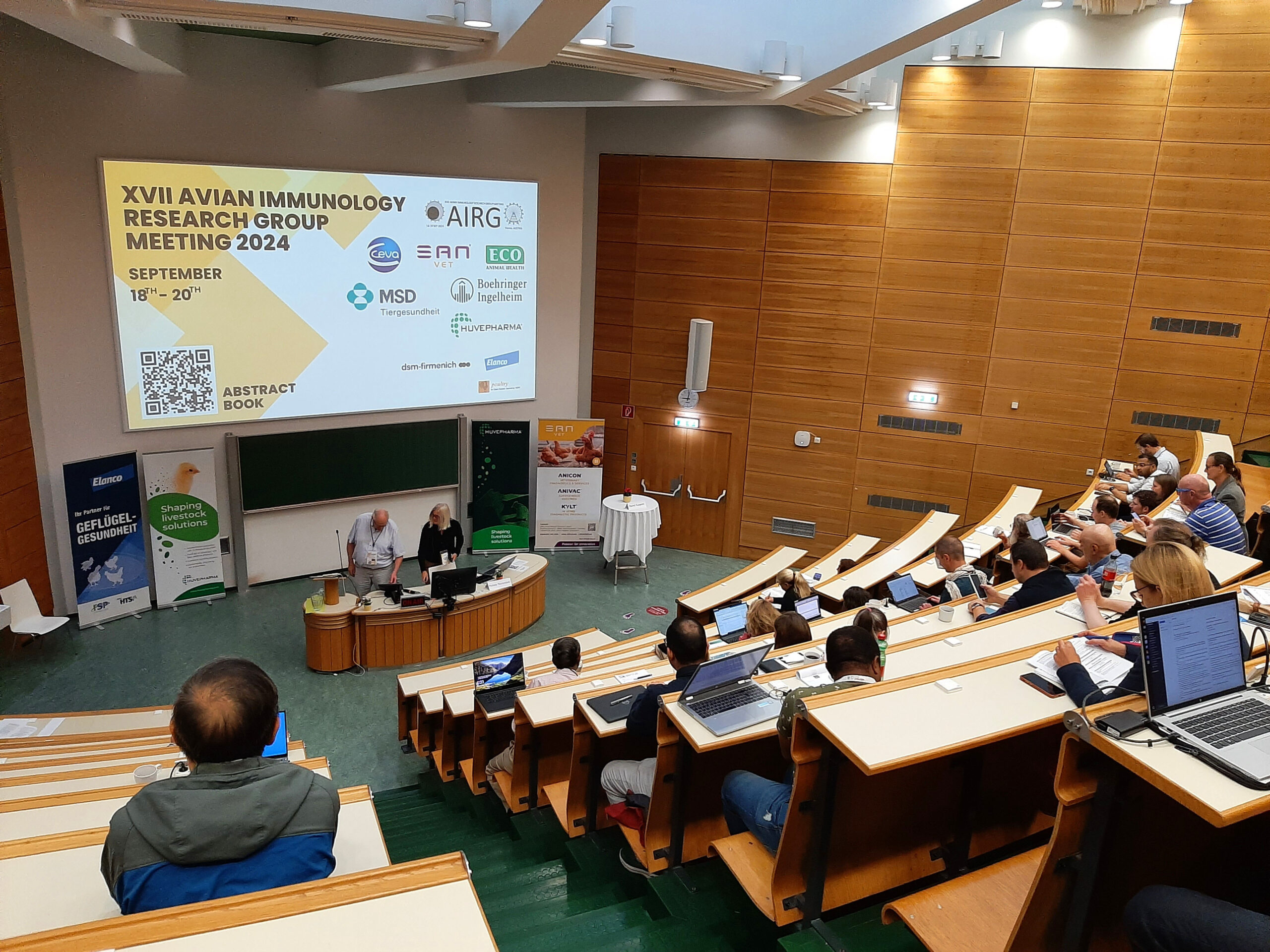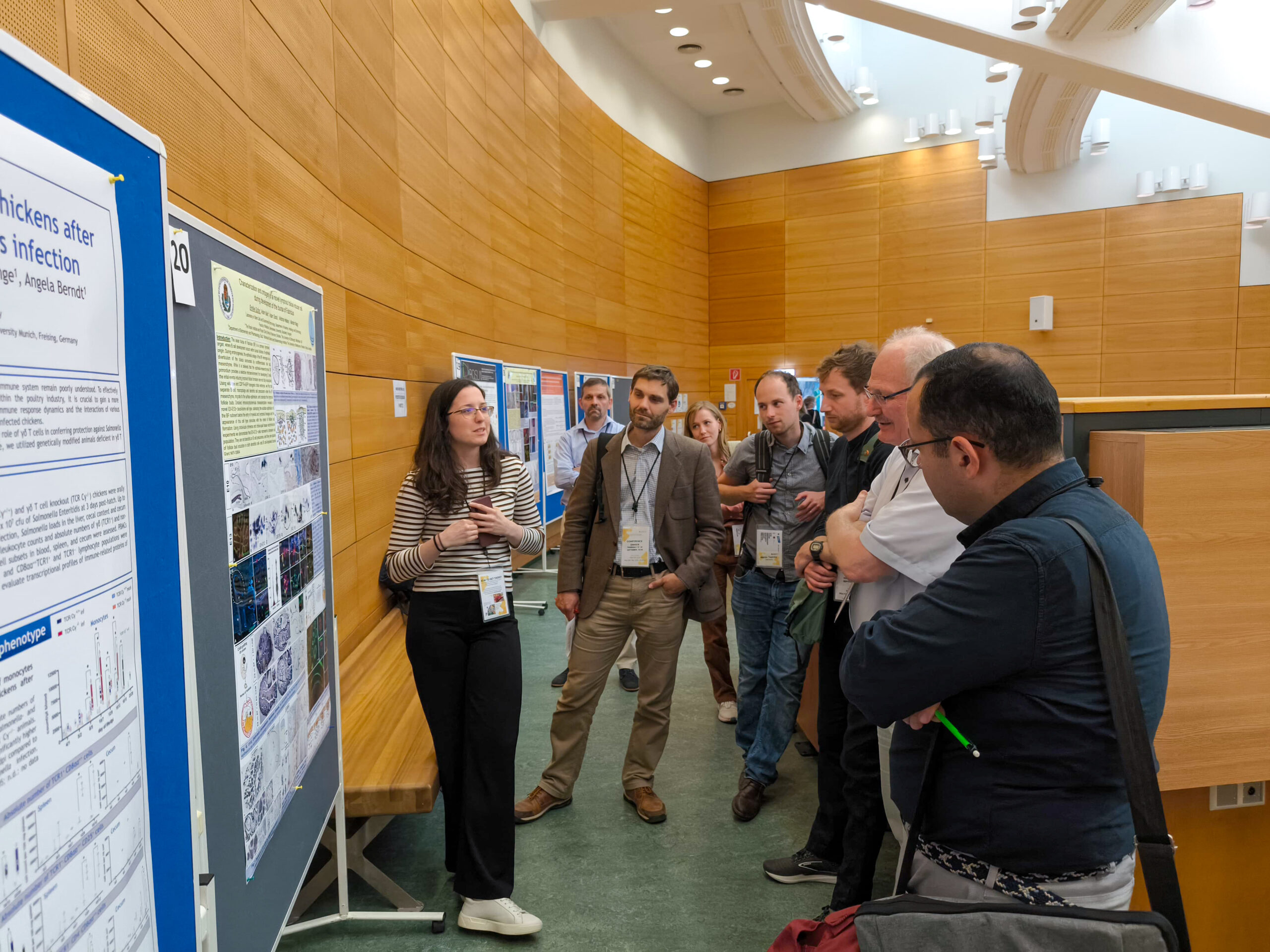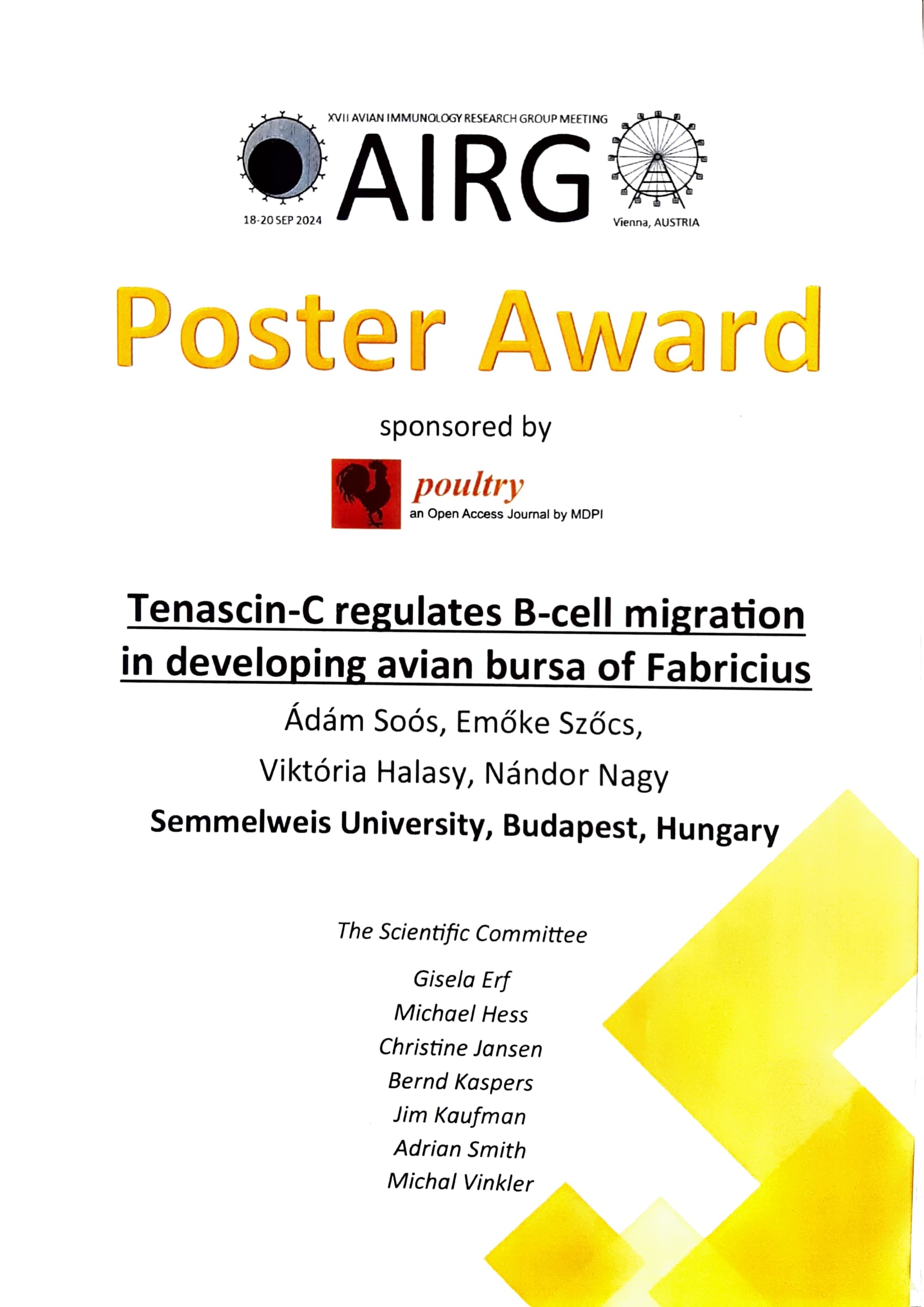The XVIIth meeting of the Avian Immunology Research Group (AIRG) took place at the University of Veterinary Medicine in Vienna, between the 18th and 20th of September. The three-day conference covered important topics across the field of avian immunology in several scientific sessions like innate immunity, MHC and adaptive immunity, vaccines and immunogenetics, host-pathogen interactions, evolutionary and ecological immunology.
Poster presentations from the lab covered topics related to B-cell migration and lymphoid tissue induction.
Ádám Soós received best poster award for his poster presentation entitled: Tenascin-C regulates B-cell migration in developing avian bursa of Fabricius.
Find the poster abstracts below:
The bursa of Fabricius (BF) is a peculiar lymphoid organ to birds and essential for the amplification and differentiation of B lymphoid progenitors. B-cell precursors develop in two separate compartments of the bursal follicles: the ectodermal medulla and the cortex of mesodermal origin. Although the role of the medulla required for B-cell maturation has been characterized, the molecular composition and function of the ontogenetically later emerging cortical region is not known. In order to characterize the origin and structure of the neglected cortical compartment, molecular analysis of the follicular cortex was performed in combination with cell culture and embryo manipulation techniques. Immunofluorescence staining of adult BF revealed a heterogeneous B-cell population in the follicle cortex with a chB6+/IgM+/CXCR4high outer region and a CXCR4low/dim region directly adjacent to the cortico-medullary border. The cortex is supported by mesenchymal reticular cells, which uniformly produce extracellular matrix (ECM). Detailed characterization of the ECM revealed that tenascin-C (TNC) expression is highly concentrated to the CXCR4low/dim region of the post-hatch follicle cortex and its embryonic expression starts when CXCR4high B-cell precursors forming the cortex accumulate around follicle buds. We hypothesize that TNC regulates B-cell migration in embryonic and adult chicken BF. Using in vitro BF follicle explants, we show that TNC inhibits CXCR4+ B-cell migration. This was confirmed by TNC overexpression, achieved in ovo using Shh-encoding RCAS retrovirus, which resulted in reduction of size and BF follicle formation.These data indicate that exclusion of TNC from the embryonic BF mesenchyme is essential for the homing of CXCR4high B-cell precursors. Complementary expression pattern of TNC and CXCR4 molecules support the model that B-cells have to downregulate CXCR4 to leave the tenascin-high microenvironment of the cortex and colonize the peripheral organs.
The avian bursa of Fabricius (BF) is a primary lymphoid organ, where B-cell development occurs within bursal follicles of epithelial origin. During embryogenesis the epithelial anlage of the BF emerges as a diverticulum of the cloaca surrounded by undifferentiated tail bud mesenchyme. While it is believed that the epithelial-mesenchymal BF primordium provides a selective microenvironment for developing B cells, the initial events inducing lymphoid follicle formation are not fully elucidated. Using wild type and CSF1R-eGFP transgenic chick embryos, we find that separate B cell, macrophage and dendritic cell precursors enter the BF mesenchyme, migrate to the surface epithelium, and colonize the lymphoid follicle buds. Detailed immunocytochemical characterization revealed a novel EIV-E12+ blood-borne cell type, colonizing the surface epithelium of the BF rudiment before the entry of myeloid and lymphoid lineages and this cell type induces follicle bud formation. Using chick-duck chimeras and chick-quail tissue recombination experiments we demonstrate that EIV-E12+ cells represent a transient cell population that are not dendritic or B cells precursors, and they are capable of follicle bud induction in both dendritic cell- and B cell-depleted bursae.



